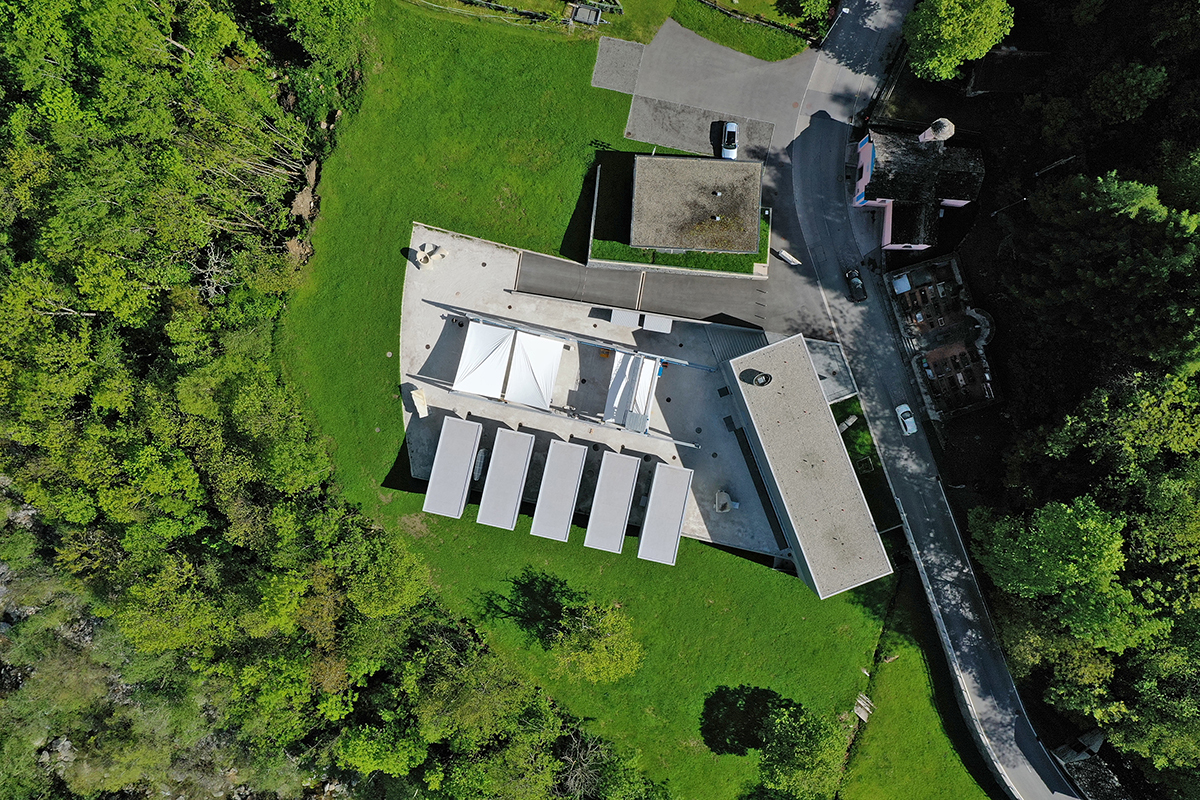Discover
Discover the Centro Internazionale di Scultura and the beautiful landscape of the Vallemaggia. We look forward to seeing you!

The Centro Internazionale di Scultura
Centro Internazionale
di Scultura
Via Cantonale
6695 Peccia (Svizzera)
info@centroscultura.ch
+41 91 760 80 80
Arrival is possible by car (parking spaces available) as well as by public transportation (several connections daily from Locarno, travel time approx. 1h30 hours).
Opening hours
From June to October
Thursday- Saturday/ 2.30 p.m. - 6.30 p.m.
or on request: info@centroscultura.ch
Free Entrance
Guided tours
To request a guided tour or for any additional request, please write to:
info@centroscultura.ch
+41 91 760 80 80
Other places of interest in the surroundings. Activities and restaurants.
Direction north (Fusio)
Church of Mogno
The church dedicated to St. John the Baptist stands in the settlement of Mogno, which belongs to the municipality of Fusio. It was built between 1992 and 1996 according to a project by Mario Botta, on the site of the former 17th century church, which was destroyed by an avalanche in 1986. The modern church, with its original cylindrical shape divided at an angle and the decorative use of stone elements, stands out clearly from the houses that correspond to the traditional way of building in the mountain valleys. The expression of strength conveyed by the masonry contrasts playfully with the lightness of the glass roof.
Mountain village of Fusio
Fusio is the highest village in the Val Lavizzara (1280 m above sea level) The compact village center still has many characteristic old buildings made of stone and wood. The origins of the village are documented as 1286, but it cannot be excluded that the Walser, on their journey from the Valais to the Tyrol, also left traces here. Typical are also the shingle roofs made of larch or fir wood on some stables.
Mountain lakes around the Naret
The Naret area offers a wealth of different hikes. The Passo del Naret (2438 m), situated at the foot of the Pizzo del Naret (2585 m), leads to Val Sambuco, to Val Torta and to Ossasco in Val Bedretto. It is possible to stop for a rest at the Cristallina mountain hut (2349 m). The Valle Sambuco is also connected to the Leventina through the Passo del Sassello, (2334 m). The Passo del Sasso Nero (2420 m), on the other hand, leads to the Val di Peccia.
Scuola di Scultura
It is the policy of the Scuola di Scultura that it should be an open school, a place where everyone, beginners, intermediate and advanced students as well as professionals, are offered an opportunity to develop their creative talents.The professional quality and the special ambience characterised by the impressive and natural beauty of the upper Maggia valley offers ideal conditions for getting immersed in the world of the plastic arts.
Peccia
La vallée latérale de Peccia se distingue par ses veines géologiques de pierre ollaire et de marbre blanc, ce dernier exploité et travaillé depuis plus de 60 ans. La région de Peccia, située entre 900 et 1300 m s./m. comprend une vallée latérale caractérisée par la présence de marbre et de pierre ollaire. Depuis plus de 60 ans, au lieu-dit «Gheiba» le marbre blanc est extrait et travaillé dans les laboratoires de Peccia. C’est l’unique carrière de marbre en Suisse.
La pierre ollaire a été exploitée et travaillée jusqu’au début du XXo siècle. Casseroles en pierre ollaire «laveggi» et fourneaux pour chauffer les maisons étaient les principaux produits manufacturés, vendus aussi sur les marchés de Milan et d’Hambourg dès le XVIo siècle.

